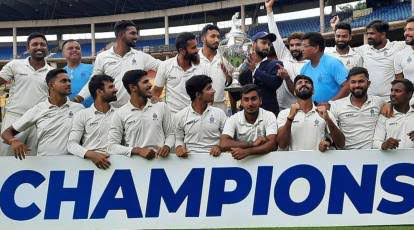The Legacy and Significance of the Duleep Trophy in Indian Cricket
Cricket in India is more than just a sport; it's a religion, a unifying force, and a source of national pride. Among the various domestic tournaments that have contributed to the rich history of Indian cricket, the **Duleep Trophy** holds a special place. Established in 1961, this prestigious tournament has played a pivotal role in shaping the careers of countless cricketers, providing a platform for emerging talents to showcase their skills and compete at a higher level. As we explore the legacy and importance of the **Duleep Trophy**, we’ll understand why this tournament remains a cornerstone of Indian domestic cricket.
The Origins of the Duleep Trophy
The **Duleep Trophy** was named in honour of Kumar Shri Duleepsinhji, one of India’s earliest cricketing legends who made his mark in the 1930s. The tournament was conceived as a zonal competition, pitting teams representing different geographical zones of India—North, South, East, West, and Central—against each other. The objective was to encourage regional talent and foster healthy competition among players from different parts of the country.
Initially, the **Duleep Trophy** featured a knock-out format, but over the years, it has evolved to include a round-robin league system, ensuring that each team plays more matches. This change has allowed for a more comprehensive assessment of a player’s abilities and has contributed to the tournament’s ongoing relevance in Indian cricket.
The Role of the Duleep Trophy in Indian Cricket
The **Duleep Trophy** has long been regarded as a crucial stepping stone for cricketers aspiring to play for the Indian national team. Unlike other domestic tournaments, which may focus more on individual performances, the **Duleep Trophy** emphasizes teamwork and the ability to perform under pressure. It brings together some of the best talent from across the country, creating a highly competitive environment that mirrors the intensity of international cricket.
For selectors, the **Duleep Trophy** serves as a litmus test for identifying players who can handle the rigours of Test cricket. Many of India’s cricketing greats, including Sunil Gavaskar, Sachin Tendulkar, and Rahul Dravid, have graced this tournament, using it as a platform to hone their skills and make a case for their inclusion in the national squad.
Notable Performances and Historic Matches
Over the decades, the **Duleep Trophy** has witnessed some unforgettable performances and historic matches that have become part of Indian cricket folklore. One of the most memorable moments came in 1990 when a young Sachin Tendulkar, playing for West Zone, scored a brilliant double century against South Zone. This innings not only cemented his reputation as a prodigious talent but also highlighted the importance of the **Duleep Trophy** as a breeding ground for future stars.
Another iconic moment in the tournament’s history was the 2003-04 final between North Zone and West Zone, where Gautam Gambhir’s scintillating century helped North Zone clinch a dramatic victory. Such matches have added to the tournament’s prestige, making the **Duleep Trophy** an integral part of India’s cricketing narrative.
Evolution and Current Format
The **Duleep Trophy** has undergone several changes in its format to adapt to the evolving landscape of Indian cricket. One of the significant changes came in 2016 when the Board of Control for Cricket in India (BCCI) decided to experiment with the pink ball and day-night matches in the tournament. This move was aimed at preparing Indian players for the challenges of day-night Test matches, reflecting the tournament’s role in keeping pace with global cricketing trends.
In recent years, the format has also been altered to include teams selected by the BCCI, comprising players from different zones rather than strict zonal teams. This change was made to ensure a more balanced competition and to give selectors a better opportunity to assess the best talent available in the country. The **Duleep Trophy** continues to be a critical part of the domestic calendar, offering players a chance to prove their mettle in a format that closely resembles Test cricket.
The Future of the Duleep Trophy
As Indian cricket continues to grow and evolve, the **Duleep Trophy** remains a vital component of the domestic circuit. The tournament’s ability to adapt to changing times, while still maintaining its core values, ensures its relevance in the modern era. With the rise of limited-overs formats like the Indian Premier League (IPL), the **Duleep Trophy** serves as a reminder of the importance of the longer format of the game, particularly in developing the temperament and skills required for Test cricket.
Looking ahead, the **Duleep Trophy** is likely to continue playing a key role in shaping the future of Indian cricket. As the selectors and coaches focus on building a strong Test team capable of competing in all conditions, the tournament will be crucial in identifying and nurturing the next generation of Indian cricketers.
Conclusion
In the grand tapestry of Indian cricket, the **Duleep Trophy** stands out as a tournament that has consistently contributed to the development of the game in the country. From its inception in 1961 to its current form, the tournament has been a breeding ground for some of India’s greatest cricketing talents. As we look forward to future editions of the **Duleep Trophy**, its legacy as a cornerstone of Indian domestic cricket remains firmly intact, continuing to inspire and challenge the best cricketers in the country.






No comments:
Post a Comment